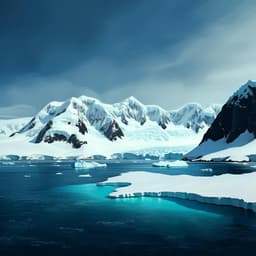
Earth Sciences
Enhanced Arctic sea ice melting controlled by larger heat discharge of mid-Holocene rivers
J. Dong, X. Shi, et al.
This research reveals the significant influence of Russian pan-Arctic river heat discharge on Arctic sea ice loss, highlighting the interplay between solar insolation and regional albedo changes. Conducted by a team of experts including Jiang Dong and Xuefa Shi, this study uncovers how intensified heat contributions have accelerated summer sea ice melting amidst global warming.
~3 min • Beginner • English
Related Publications
Explore these studies to deepen your understanding of the subject.







